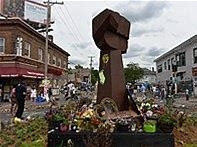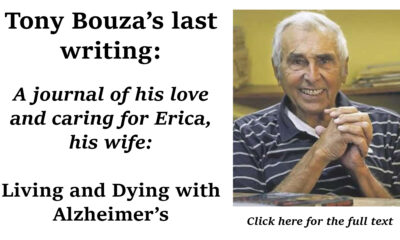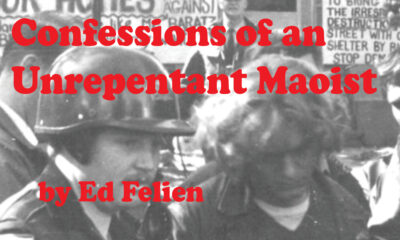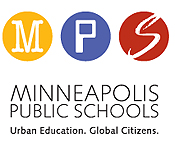
The iconic raised fist sculpture, standing tall at George Floyd Square
BY TOM ABELES
“Just because you invite me to the table doesn’t mean that I get something to eat.”
– Rev. Dr. Martin Luther King, Jr.
The standard development model used by Minneapolis is to invite residents to a series of listening sessions to get ideas and then build possible alternatives. This can be termed an engagement. At the end of implementation, those who contributed are basically not integrated into the effort, and often there is no following participatory plan built into the implementation.
Over time there have been at least 5 to 6 attempts to build such a model for the 4 communities that border on the intersection of 38th and Chicago. There have been similar results for other city projects with concomitant results.
The alternative – a participatory model for which the city invested 400 million dollars over 10 years – is the former Neighborhood Revitalization Program (NRP), where the funds were given directly to the residents with advice from the city and others. Where citizens have vested interest, there are numerous successful examples from the NRP effort and other programs in the Twin Cities.
38th St. and Chicago Ave.
With the murder of George Floyd and the subsequent riots and destruction, the city needed to repair and rebuild the damage in the blocks between 37th and 39th street along Chicago. Additionally, Floyd’s death raised increasing demand to include a memorial and an area for reflection, caring, and repair within the community tempered by the existence of extant racial disparity. As part of the standard engagement via community listening sessions, a Co-creation Team (CCT) was created, which had as its focus the integration of a memorial and other opportunities to respond to the needs of the Black community.
The CCT, seeing no plan to move forward, withdrew and reconstituted itself as the Community Visioning Council (CVC) with a plan putting the focus first on the historic and current issues facing the Black community. They approached Council Member Jason Chavez with the idea to formally develop a plan – which would replace the perceived failure of the mayor’s departments attempt to actualize such a plan – and indicated that they would deliver that plan in the second half of 2025. The first step, as a base, was to be a pedestrian mall between 37th and 38th along Chicago. Chavez authored several RCA’s or Requests for council members to act and approve both the planning program and the initial plan for the pedestrian mall.
Under the recent enactment of the new city charter, there is a strict division of the functions of the mayor’s departments, including planning and development and the function of the city council. The effort of the CVC and the action of the city council creates a key example of the limits and responsibilities that exist in this strong mayor charter. Whether there is a conflict between the two divisions has not been tested with an actual project such as proposed by the CVC. More importantly, there are several examples where council members in the past have authorized and contributed to the action. The new charter’s intent to allow either or both the mayor and the council to carry out planning and/or project approval needs clarification to avoid the past problems.
There are a few city council RCA which authorize name changes or designations within the area to be reconstructed. Council authorized name changes are often honorific, such as Kings Highway/Dupont, and are seen by the council as no cost. Unfortunately, when the names define an area, such as George Floyd Square, they have political and cultural significance which deserve attention. The plans for the mall on Chicago are to be designed as pedestrian based and, more importantly, acts intentionally as a constriction for the proposed restoration of Metro Transit (authorized by a previous RCA). The permit can be revoked if the local businesses and metro transit can identify economic and other problems. Again, the proposed mall should seem to fall within the mayor’s department as a planning effort and not within the defined charter functions of the council.
At the present time, the CVC has only a proposed plan – which they will fully construct – which will include the immediate needs to move forward, and a planning document which would be like any proposed development within the city. This includes many elements – including the cost for construction and fiscally sound plans to implement and operate the proposed site – and qualifications of the developer to manage all elements in a fiscal and operational manner, so that the city is relieved of any costs incurred that have not been defined.
The 38th and Chicago effort is the first test of the new city charter, and far more complex than a housing project or similar infrastructure.






















